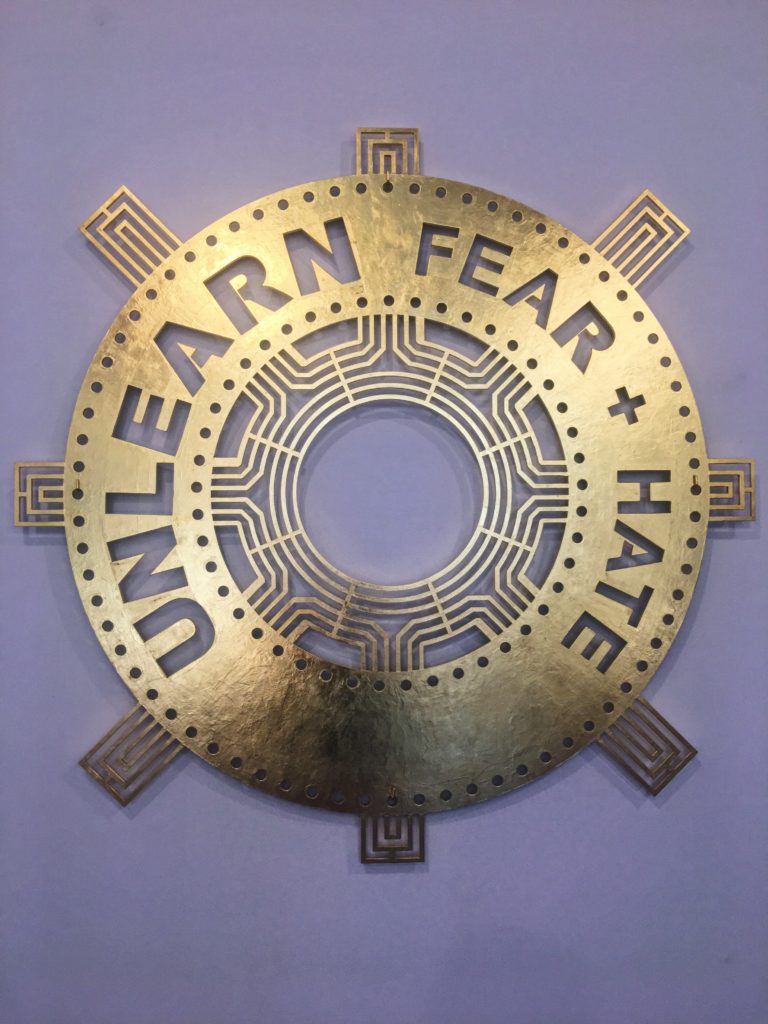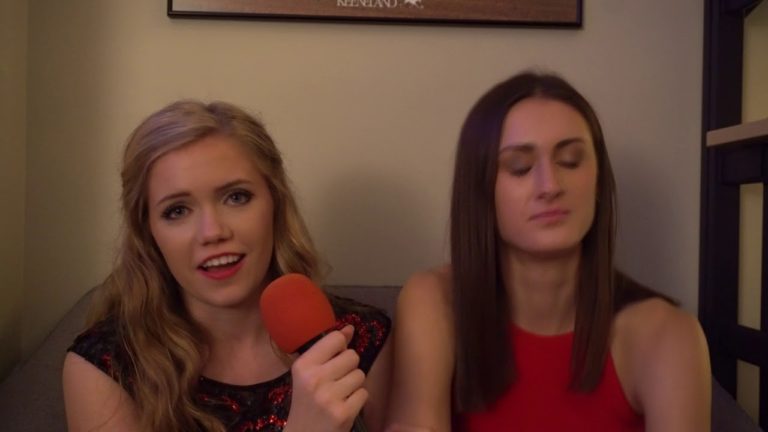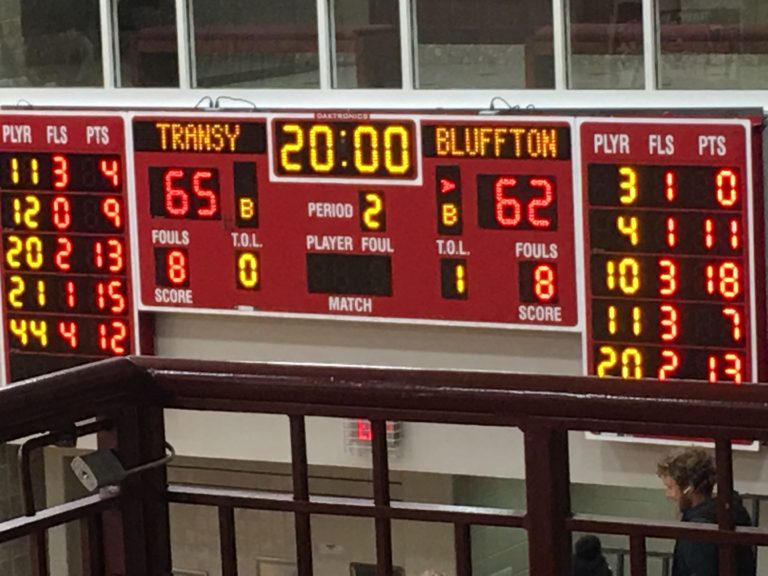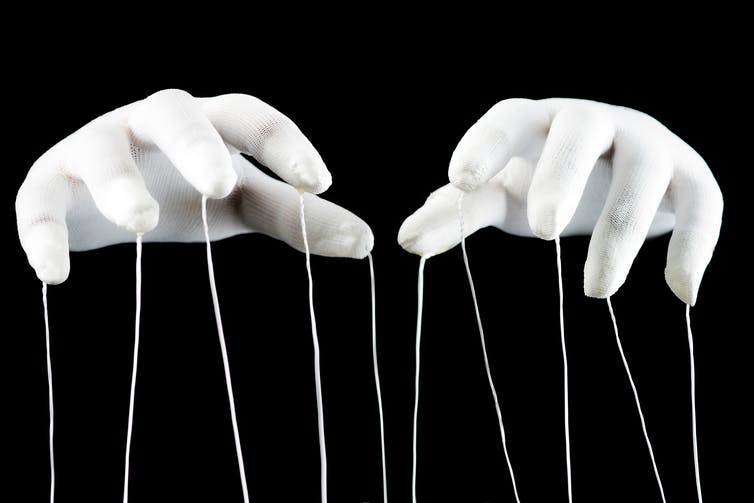SZN 3 finale baby, ah ha!
Rambler Weekly Playlist & Blog: Holiday Edition
Hey Y’all!
We’ve officially made it to the most stressful and jolly time of the semester! Whether you’re celebrating Christmas, Hanukkah, or Kwanza this December, I’ve made a playlist for you! We’re only one week away from vacation, so hang in there, grab some coffee, and listen to this weekly playlist to kick off your holiday spirit!
Monday, December 10th, @ALL DAY
READING DAY.
SAB Stress Fest Events, December 7th-11th (Not an arts event, but probably something we all need).
Saturday-Take 10 Kits, all day, Library and Dorm Lobbies
Monday-The last brinner @9pm, Forrer Hall
Tuesday-PUPPIES!!!! @11:30am-1pm, Campus Center Gym
Gallery Review: “Unlearn Fear + Hate” at the Downtown Arts Center
“Unlearn Fear + Hate” is an exhibition by Kurt Gohde and Kremena Todorova currently being housed in the Downtown Arts Center until January 6th. A quick glance around makes it clear that its importance isn’t confined to the white walls of the gallery. This “cycle of artworks” was inspired by “Love Letta to de Worl’”, a poem by Frank X Walker, Kentucky’s first African American poet laureate. He asserts that, “We can’t pass the course on humanity / if we keep failing the lessons / on harmony / and until we unlearn fear and hate.”
In some ways, the artwork is also a documentation. Walker’s words have been painted on streets, inked into skin, and cut into halos that fit any head. The art is out in the world that his poem describes.
Pictured are street scenes as far away as Bulgaria and people from every walk of life. In some photographs, searching for the boldly colored “Unlearn Fear + Hate” stencil is like looking for Waldo. Catch a glimpse and it’s impossible to unsee. In others, such as the photograph of Bourbon Avenue, the words stretch bravely across the pavement, unafraid of oncoming traffic. That stencil was done with Transy’s class of 2020, but Gohde and Todorova remarked that they sometimes receive requests for small stencils from people who have seen their work on social media.
The halo sculptures are interactive, as is evidenced by the Illuminations and photographs of people posing with them. “We think of all the photographs taken in front of our Unlearn Fear + Hate sculptures as equivalent to a visual petition, one that asks all of us to be less fearful and more loving,” explained Gohde and Todorova. The halos have been translated into languages such as Spanish, Hebrew, and Arabic, embodying their message of acceptance.
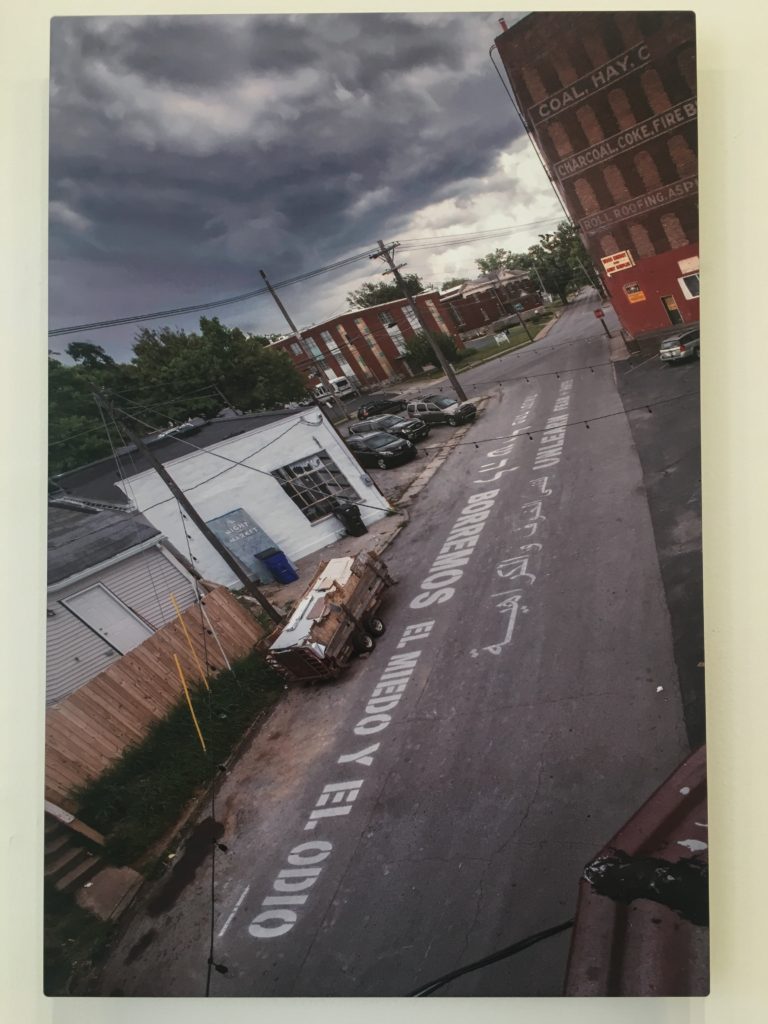
Each illumination is hand colored and uses 24 karat gold. They are reminiscent of iconography found in churches, with their haloed subjects enclosed in gold. This is representative of the holiness found in loving one another.
The words have also been cross-stitched with each of the 153 languages spoken in Lexington as of December 2017. The UK College of Social Work sponsored the event, and since then the number has increased. Transy’s Chi Omega chapter also hosted a stitching event in 2016, shortly after the presidential election.
“Unlearn Fear + Hate” is unique in that it is not simply the work of two artists to be studied from across the room. It belongs to Gohde and Todorova, but it belongs to the people too. Its meaning is unambiguous, leaving no room to debate what is being said. Having literally painted the town, Gohde and Todorova aren’t interested in subtlety.
The message is a simple one: conditioning ourselves to love instead of hate will heal the world’s brokenness. Today, there are endless voices talking over each other, shouting words that seek to counteract Walker’s. Luckily, more and more faces are being added to the “petition”.
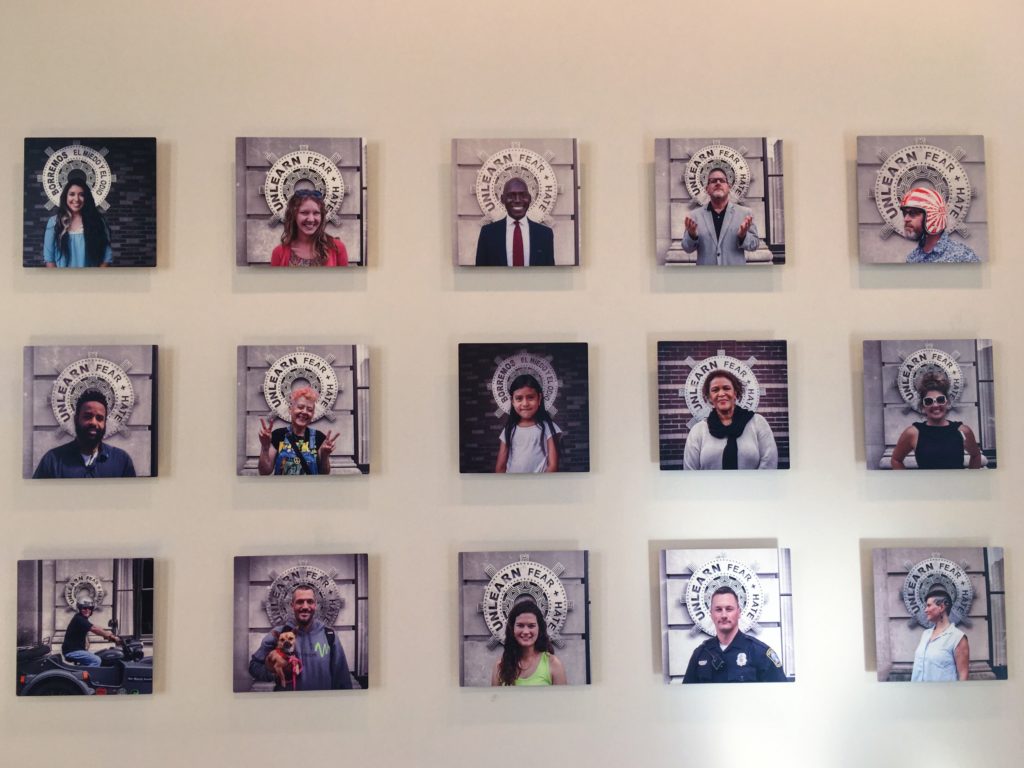
The exhibit forces viewers to realize that often, hatred and fear are traditions rather than anomalies. No one is born with animosity in his heart, but it seeps in anyway.
When asked what they want viewers to take away from the collection, Gohde and Todorova replied, “If people can remember these words — Unlearn Fear + Hate —then maybe they’ll also remember to try to do what the words encourage all of us to do. Unlearning fear isn’t easy. Some may say it’s not even desirable. We believe that eliminating fear from our communities is a way to invite everyone who is part of them to unlearn their own fears.”
Hopefully, “Unlearn Fear + Hate” will transcend the inertness of words and become personified by the haloed, the tattooed, and those whose feet touch Bourbon.
The Caf is closing. Here’s what students think.
With the demolition of Forrer Hall only a month away, we asked students around campus for their thoughts on cramming the whole school into Transylvania University’s secondary Cafeteria; the smaller and further away “Rafskeller.”
Transy men’s basketball wins nail biter in first conference affair
On the first night of December, Transylvania men’s basketball hosted the Bluffton Beavers in the initial HCAC (Heartland Collegiate Athletic Conference) game of the season. Bluffton had come off of four consecutive wins, sporting a 4-1 record. Meanwhile, Transylvania presented a record of 2-3 looking to continue a positive trend after capturing a win against Frostburg St.

The Beck Center witnessed an enthusiastic crowd from the tipoff, but the story of the first half was the accuracy of three point shooting for Bluffton. The Beavers launched 12 from deep range and connected on 6 leading to a high scoring 36 points at the half. Guard Andrew Renner scored 9 points in the first half, all courtesy of the three point line. While coach Brian Lane did use some different defenses, including a full court press and 3-2 zone, it was clear the defense would have to focus on slowing down the shooting of Bluffton.
Transylvania weathered the storm and managed to put 34 points on the board themselves by the half. Instead of relying on three point shooting, the Pioneers focused on getting quality possessions and working the ball into the paint. Center Luke Schroeder showed solid composure and connected on a plethora of hook shots and a mid-range jumper. Devin Twenty also took a big share of the scoring burden, scoring 11 points on an efficient (4-5) shooting, as well as netting Transylvania’s only three pointer of the first half.
The inability for either team to build any sort of comfortable lead remained throughout the second half. Specifically, the contest can be told as a tale of two runs. At the 7:20 mark in the second half, Bluffton’s Jameel Cosby made a layup to give the Beavers a 1 point lead, beginning an 11-3 run in favor of Bluffton to give the visitors a 7 point lead with just 4:35 left in the contest. From there Transylvania went on on an 8-2 run in which Cooper Theobald either scored or assisted on all baskets, to give the Pioneers a 1 point deficit (62-61) with 2:13 left to play.
After a stalemate the pioneers called timeout with 48 seconds remaining, down 1, and decided to draw up a play for first year center Luke Schroeder. The 6 foot 8 youngster hailing from Sydney, Australia managed to convert a drop step move on the left block with 15 seconds remaining in what proved to be the game winner for the Pios. After two consecutive turnovers by Bluffton and a pair of free throws from Will Sivillis the fans were left with a Pioneer victory (65-62) and only nubs on the top of their fingers.
Interestingly, both teams had nearly identical numbers in all statistical categories but one, turnovers. The Pioneers lost possession just 7 times compared to Bluffton’s 14. More specifically, in the second half, the Beavers turned the ball over 6 more times than Pioneers, along with producing 5 turnovers in the last 3:33 of the game. While Coach Lane had experimented with zone in the first half, in the second it was simply just man to man pressure defense that allowed Transylvania to eek out this one in the second half.
Moving forward, it will be intriguing to see if Coach Lane has locked in a rotation. In these initial 4 games starters and playing time have jumbled around quite a bit however the starters tonight were the same as the previous game. Going forward it seems Luke Schroeder is playing a bigger scoring role and clearly faith was shown in him tonight, giving him the nod to take the game winner. The persistent trend of balanced scoring seems to be for the staying as 9 players put points on the board with three pioneers in double digits. Overall, it seems the Pioneers have recovered from their 3 game losing streak in November and are representing a (3-3) record with a (1-0) start to conference play.
The Transylvania men’s basketball team will next play at Hanover on Wednesday, December 5 at 7:30pm. You can view the games live here.
Further Reading: How mainstream media helps weaponize far-right conspiracy theories
This article is republished from The Conversation under a Creative Commons license. Read the original article. The original article was written by Heather Woods, Assistant Professor of Rhetoric and Technology, Kansas State University, and Leslie Hahner, Associate Professor of Communication, Baylor University.
Once an anti-Semitic rumor moved from fringe to the mainstream, it took less than two weeks for violence to erupt. The false allegation that liberal philanthropist George Soros was funding or supporting a caravan of Honduran refugees heading to the U.S. spread wildly from a single tweet posted on Oct. 14.
Along with far-right memes, that allegation helped motivate both an alleged mail-bomber and a mass shooter at a Pittsburgh synagogue. The way these messages traveled across the internet in this short time span is just one example of how extremist messages and memes circulate with incredible speed across mainstream social media platforms.
From our vantage point as researchers of visual and digital communication, memes – short, often image-based forms of communication – are powerful engines of persuasion, even though they can appear innocuous or even humorous. Perhaps the best known examples are LOLCats memes, pairing funny pictures of cats with customizable phrases or sentences. Memes can disseminate information quickly because they invite people to share or remix content with little effort required, making widespread dispersal more likely.
Memes need not be humorous or factual to be functional. All they need to do is attract attention online, which often translates into mainstream media coverage. That makes memes potent tools for distributing disinformation. Moreover, the online and mainstream platforms that amplify memes’ circulation can weaponize false claims and encourage conspiracy theorists – sometimes toward violence.
Memes move conspiracies
Understanding how these messages embolden anti-Semitism and other forms of terrorism involves grappling with how white supremacists use digital media. As we detail in our forthcoming book “Make America Meme Again,” messages and memes weaponized in far-right networks are deft political tools that move swiftly across social and traditional media. Because memes are stealthy political messages that usually offer rebellious or irreverent humor, they can be easily retweeted, shared or even pasted to the side of a van.
Before the dawn of today’s social media network, right-wing extremists were more difficult to find, often gathering in local communities and later discreetly in online forums unknown to the vast majority of internet users. Paranoid, rabid discourses of this ilk still boil around those darker corners of the internet. Today, memes help right-wing extremists communicate with one another and with mainstream audiences.
Soros has been demonized by right-wing activists for years, if not decades. Long before the Pittsburgh attack and the mail bombings, conspiracy theories about him were common on all sorts of right-wing discussion areas – including on Infowars, 4chan, Reddit and Gab. Starting in March 2018, the terms “caravan,” “immigrants” and “Soros” were frequently posted together on Twitter and Facebook. Memes depicting Soros as an evil fascist facilitating an invasion were commonplace.
The alleged mail bomber covered his van with “images and slogans often found on fringe right-wing social media accounts.” But the suspect didn’t find them on radical sites where white supremacists hide. Instead, based on his social media activity, he likely was radicalized in the same place most people look at cute photos of friends’ kids and check up on Aunt Beatrice – Facebook.
From fringe to network
Social media platforms have tried to push hate speech and uninformed conspiracy theories off their sites, but that’s a difficult task both technologically and ethically. Often, conspiracy promoters find ways to get their ideas into well-trafficked social media, where algorithms promote posts that garner lots of responses – whether appreciative or outraged.
Despite repeated fact checking, the conspiracy grew. Bots and other automated accounts drove roughly 60 percent of online talk about the caravan – but people were part of it too, often sharing posts without doing any sort of verification. Ultimately, these messages and memes may have inspired terrorism.
By October, discussions of the “caravan of immigrants” had grown beyond social media. Within a week of that Oct. 14 tweet alleging Soros was funding a group of refugees seeking asylum, far-right commentator Alex Jones broadcast the conspiracy on Infowars, to his audience of over 1 million daily visitors.
The conspiracy grew from there, with the video or related images popping up on nearly every platform. Eventually the conspiracy reached hundreds of thousands of potential viewers – including the men who would allegedly become the mail bomber and the synagogue shooter.
The two men may never have known of each other or the other’s plans. But their actions intertwined with a viciously networked conspiracy theory.
Connecting to mainstream media
Once there is enough social media attention on a topic or claim, it may be covered in more traditional news outlets. That can spread the idea even more widely, and lend credence to inaccuracies and lies. Politicians may also notice online discussion and join in, as U.S. Sen. Ted Cruz and a clerk for Texas’ Harris County did with the purported Soros connection to the migrant caravan.
Conspiratorial ideas often become an echo chamber, in which each post draws more attention than the last, generating stronger outrage and escalating the conspiracy. The average user who looks at a conspiratorial meme may not believe its message, but many users may. Even people who don’t believe it initially might come to assume it’s true after seeing an idea several times from different sources. Still others might spread the conspiracy just for amusement in the distress of others.
Demonize, divide, conquer
Memes, tweets and other forms of propaganda are designed to rile up constituents. Scaring voters with purported invasions was one way to infuriate voters as they headed to vote in the midterm elections.
President Donald Trump has historically spread far-right conspiracy theories with little regard for the truth. Just before the election – after the mail bomb attempts and the tragedy in Pittsburgh – Trump himself explicitly repeated the conspiracy about Soros.
When anti-Semitic, racist and xenophobic ideas spread through social media networks, they can infect a host of mainstream information sources – and make fear and violence more likely. That broadens the picture of a dangerous world from which people need protection. Fear appeals of this sort can influence voting, and even push people to take matters into their own violent hands. Until social media platforms or federal agencies find ways to diminish extremism, the proliferation of far-right memes, videos and texts will continue to imperil the citizenry.
Men’s Hoops Kicks off Conference Play Saturday
The Pioneers kick off conference play against Bluffton on Saturday at the Beck Center. The Pioneers look to start strong in front of their home Lexington crowd to kick off the month of December.
Transy has been off to an up and down start kicking off the season at 2-3 not counting their exhibition game against Kentucky. They are coming off a visit to Pittsburgh in the Carnegie Mellon DoubleTree Invitational last weekend, in which they went 1-1.
In the invitational up in Pittsburgh, the Pioneers faced ninth-ranked Hamilton College. This game was a ended in a close 73-63 defeat for the Pioneers. The shining light in the loss was first-year center Luke Schroeder who had a double-double with 19 points and 13 rebounds.
The following game Transy played took place the very next day where they faced off against Frostburg State. Transylvania was 1-3 going into this game on the losing end of three straight games to Centre, Emory-Henry, and Hamilton after winning their season opener against Mount Union.
Transy was able to defeat Frostburg St. to the tune of 82-71. This was the best offensive performance from the Pioneers all season. They shot an impressive 49% from the field and found the offensive efficiency that they are capable of producing. The scoring in this game was led by sophomore Devin Twenty who dropped 14 points to go along with three assists in his first start of the season. He has served, at times, primary bench scorer by also having a strong game against Centre with 18 points in that game.
Transy looks to carry their well balanced offensive attack on to the Bluffton Beavers who have had an impressive 4-1 start to their season with four straight victories with two high scoring, close wins against Heidelberg and Kalamazoo. Both teams have yet to play a conference game prior to their meeting on Saturday.
Last season, the Pioneers found success against the Beavers, beating them both times they faced each other. Transy won by double digits both times and looks to repeat those performances in Lexington.
Weekly Blog & Playlist: November 30th
Hey Y’all!
It’s not finals week yet, but the stress of every looming assignment is weighing everyone down and eating away at our sanity. This week, I’ve compiled a chill playlist full of relaxing vibes that will hopefully help you get through the stress of everything happening at once! As for arts events, this week is packed full of music recitals and concerts as well as a TEDxWomen talk happening this evening!
Friday, November 30th @5pm-9pm, MFA Carrick Theater
Transylvania will be hosting a TEDxWomen event with several notable women in the Transy and Lexington community, as well as Transy alumni. This event aims to explore independent thinking and what it means to be open-minded in today’s diverse world, as well as civility on college campuses. Some of the speakers will include Bianca Spriggs who is a poet and professor from University of Ohio and a Transy alum, Rebecca Blankenship who is a Transy student and News Editor for The Rambler, Nada Shalash, who is a Palestinian student at the University of Kentucky and is involved in Muslim-American empowerment, and Emanuelle Sippy who is a Henry Clay High School sophomore and member of the board of the Prichard Committee Student Voice Team.
Sunday, December 2nd @3pm, MFA Haggin Auditorium
The Central Kentucky Concert Band will present their annual concert! You can find out more about the renowned band here!
Sunday, December 2nd @5pm, MFA Coleman Hall
The Transylvania Jazz Band will be having their end-of-semester concert, so go support your fellow musicians and listen to some fabulous jazz music!
Tuesday, December 4th @12:30pm, MFA Carrick Theater
Students in the music program here at Transy will be performing one song from their repertoire in the General Student Recital, round two! Come out and support your fellow music students!
Thursday, December 6th @12:30pm, MFA Carrick Theater
Students in the music program here at Transy will be performing for the last round of General Student Recitals!
Stay chill,
Taylor
UK wins on Senior Day, looks ahead to Louisville
The hometown Kentucky Wildcats kicked off their senior day on windy Saturday afternoon against the Middle Tennessee Blue Raiders. After a hot start to the season, the Wildcats have cooled off suffering back-to-back losses at the hands of SEC foes, Georgia and Tennessee. The Kentucky team looked to make their fans and seniors proud against the Blue Raiders.
The Wildcat seniors stepped up in a big way for the Wildcats in their game this past weekend. On defense, Seniors safety Mike Edwards and outside linebacker Josh Allen were all over the field combining for 28 tackles, two sacks, a forced fumble, and an interception. Edwards started the game with a 66 yard interception return for a touchdown. He followed that with forcing a fumble on the next drive to give the Wildcats some early momentum.
Josh Allen had two sacks in the fourth quarter to notch two Kentucky records which were most career sacks and most sacks in a single season. His season total is up to 13 and his impact defensively is a huge key to the team’s success this season.
Offensively, the Wildcats continued their success running the ball with Junior running back Benny Snell rushing for 116 yards with a pair of touchdowns. His physical play broke down the Middle Tennessee defense consistently breaking tackles and looking like a dominant force on the field. The crowd grew consistently more excited every time he touched the ball.
Senior tight end CJ Conrad also found success against the Blue Raiders by catching a touchdown off a highlight reel throw on the run from sophomore quarterback Terry Wilson. UK secured the victory 34-23 improving their record to 9-3 which is the best record at the 11-game mark this program has had since 1984.
Next week the Wildcats are looking to conclude their regular season with a win against the Louisville Cardinals, who have struggled mightily this season. Saturday, they fell to the North Carolina State Wolfpack at home 52-10. They are currently on an 8-game losing streak going into this game, vastly underperforming to their expectations going into the season.
The loss of their Heisman winning quarterback Lamar Jackson has really affected the Cardinals’ play this year. Going into Saturday, they fired their long tenured head coach Bobby Petrino due to their poor performance. They have not won a single conference game this year, after looking very competitive in their conference the past three seasons with Jackson leading the charge.
However, this rivalry is known for being a very even series. Last year, the Cardinals stomped the Wildcats 44-17 at Kroger Field. The year prior to last, Kentucky won a highly contested game in Louisville upsetting the Cardinals in front of their home crowd. The Cardinals do have two weapons at the wide receiver position in senior Jaylen Smith and redshirt sophomore Dez Fitzpatrick that are looking to breakout in their season finale.
Two teams that have had completely opposite seasons look to finish strong by beating their in-state rivals. Kentucky gets to look forward to a bowl game following this season, while Louisville’s season will end Saturday regardless of the result. This game will be aired on ESPN2 at 7:00 this Saturday and should be an entertaining game to watch for fans of either Louisville or Kentucky.
Education students on the Kentucky pension crisis
With the looming pension issues that Kentucky is dealing with, we decided to ask some Transy education students about the effect that this topic will have on their decision to teach as well as what impact they believe that this issue will have on public education around the state.
To give some background on Kentucky’s pension system, currently the pensions of Kentucky’s public workers are underfunded due to the money that was in the pension system being used to make up for budget shortfalls. According to Louisville’s Courier Journal, as of August 2017 the pension system is underfunded by $39 billion dollars between the pension fund as well as the retiree healthcare fund.
Kentucky Governor Matt Bevin has been opposed to raising taxes in order to make up for this deficit, and proposed a restructuring of the current pension system in order to reduce the amount that the state will need to pay out in the future. This means that teachers that have currently paid in under the old system will be having the terms of their pensions changed and pensions for incoming teachers will look very different from that of teachers of the past.
According to the students interviewed, this change to the pension program will not affect their decision though. Senior education major Rebecca Facktor said, “No one teaches for the money.” This was echoed by junior education student Maggie Wallace, who said, “I’m doing this because I’m passionate about it.”
While issues surrounding the pension may not scare these two off, they can see why it could prevent others from pursuing teaching as a career. Wallace said, “Teachers already don’t get paid a lot, the pension is something that helps to make up for that. If the pension isn’t there, I can’t see a whole lot of incentives to teach.”
It appears that the pension may not be a major concern to these individuals, but the lack of a pension is something that they believe will prevent others from getting into the profession. This could have dire consequences for public education in the state, which already ranks near the bottom of all states.



